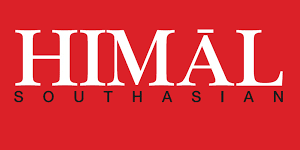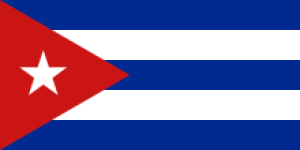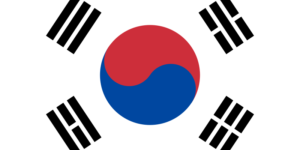How Effective Is International Aid And Assistance?
No Comments yet
John P. Ruehl – Source: Independent Media Institute
03-15-2024 ~ Assistance outcomes differ by country, but special interests and the absence of a unified vision increase the risk of mismanagement and corruption. Rising debt levels across the developing world suggest these policies may be nearing their zenith.
On February 1, 2024, Ukraine secured a €50 billion aid package from the European Union (EU), aimed at bolstering its defense capabilities and facilitating the country’s reconstruction. Dozens of other countries, along with Western-dominated multilateral lenders like the International Monetary Foundation (IMF) and the World Bank, as well as private investors, have contributed billions of dollars in aid to Ukraine since Russia’s invasion in 2022. Billions more are pledged.
While international support has been crucial for Ukraine, Kyiv will be expected to pay much of this back. Approximately half the global population now live in countries where debt payments exceed spending on education and healthcare. While wealthier countries can manage debt sustainably, poorer countries face challenges in avoiding the detrimental effects of excessive debt, leading to stunted development.
Ukraine remains in desperate need of foreign financial assistance, humanitarian aid, infrastructure development, military support, and technical capacity building. However, quiet caution has emerged among various international supporters. Ukraine’s capacity to implement Western-backed political, economic, and corruption reforms, expel Russian forces, and repay loans is being questioned. The hesitation underscores the challenges of coordinating a diverse array of donors over time.
The EU has been the primary source of financial assistance for Ukraine, and the recent approval of its latest aid package followed months of debates between member states. The IMF also provided a $15.6 billion loan in 2023, marking the first IMF loan awarded to a country at war. Foreign investors have meanwhile increasingly sought guarantees and insurance for investing in Ukraine, with the Ukrainian government working with the World Bank to implement such policies.
The U.S. has provided the bulk of Ukraine’s foreign military aid, but the most recent $60 billion in military assistance has been stalled for months due to opposition in Congress. Republican support for Ukraine has declined markedly since the early days of the war, leading proponents of the pending military aid package to emphasize its benefits for U.S. companies, job creation, and reducing the maintenance costs of holding or destroying U.S. weapons stockpiles.
However, this line of thinking has ignited pushback from across the political spectrum. Republican politicians have become increasingly critical of providing Ukraine with a “blank check,” while accusations of potential money laundering have been raised. The lack of a long-term, bipartisan strategy toward Ukraine from Washington has left defense contractors hesitant to increase arms production, already under scrutiny for price-gouging during increased demand.
Adding to this reluctance is concern in the U.S. over establishing long-term outlets for defense contractors. For instance, since 1979, the U.S. has given Egypt roughly $50 billion in military aid, including fighter jets, helicopters, tanks, armored personnel carriers, surveillance aircraft, counterterrorism training, and border security assistance. After Congress canceled half of the annual payment of $1.2 billion to Egypt in 2013 following a military-led coup (as well as $250 million in annual economic aid), U.S. officials noted that the U.S. government would have to pay for the missed shipment and the costs of winding down the programs. Aid to Egypt was later fully reinstated in 2015,
Despite the resumption of military aid to Egypt, persistent questions surround the allocation of these funds. It has helped prevent Egypt from becoming adversarial, but Cairo has nevertheless grown closer to China and Russia since 2013. U.S. weapons manufacturers maintain lucrative export opportunities, but this assistance has also helped enrich and strengthen Egypt’s military and has empowered it to absorb other forms of foreign aid. The IMF’s conditions on giving Egypt a $3 billion loan in 2023 hinged on the military government’s commitment to political and economic reform, but this remains unlikely.
Egypt, with a debt of $11 billion, stands as the IMF’s second-largest debtor country, following Argentina ($32 billion) and ahead of Ukraine ($9 billion). The World Bank counts India ($39 billion), Indonesia ($19 billion), and Pakistan ($18 billion) as its top debtors. The combined global debt owed to the IMF and World Bank tops $300 billion, with their global reach having expanded significantly from their original focus on rebuilding Europe after World War II.
These organizations began large-scale crisis intervention in developing countries in the early 1980s to address their foreign debt challenges. As the U.S. raised interest rates to combat inflation, dollar-denominated loans caused significant defaults and debt restructuring, particularly across Latin America.
The IMF and the World Bank advocated for privatization of industries and export-driven industrialization, eliminating trade barriers and granting foreign corporations easier access to raw materials. Beginning in the 1980s, conditions associated with Structural Adjustment Programs (SAPs) saw economic growth return, but aid recipients became more market-dependent and reliant on the IMF and World Bank, while wages remained low through devalued currencies.
The end of the Cold War and the establishment of the modern global financial system saw credit-hungry governments shifting their reliance on countries and multilateral organizations to embrace private lenders, including private equity and venture capital.
The impact of broad lending strategies became evident in Pakistan’s loans in the Private Power Policy in 1994. The World Bank took a dominant role in the project, which provided guarantees, alongside the Asian Development Bank and the Export-Import Bank of Japan. The Benazir Bhutto government in Pakistan offered sovereign guarantees, attracting considerable foreign investment with assured, repatriable dollar-pegged returns.
However, changes in Pakistani governments altered the long-term political direction of the project, while local independent power producers (IPPs) engaged in price-gouging and an oversupply, plunging the country into debt. The World Bank was criticized, alongside Pakistani governments and IPPs, for a lack of oversight and the misappropriation of funds. Today, Pakistan faces acute energy shortages and its debt level has surged.
Pakistan can also rely on other sources of funding. Saudi lending to Pakistan goes back to the 1970s while China entered Pakistan’s debt market in the 2000s. Over the next few years, Pakistan will need to issue major repayments to Saudi Arabia, China, and private investors, which has led to standoffs over the issuing of additional loans and deciding whose, along with Western loans, get repaid first. This has raised concerns about the sustainability and strategic wisdom of Pakistan’s growing reliance on external debt.
China’s assistance to countries often serves as a solution for its surplus labor, savings, and the industrial capabilities of its state-owned enterprises. Chinese steel, cement, coal, and other sectors accumulated enormous capacity, and China’s Belt and Road Initiative (BRI) enables China to export these resources. However, this often results in contracts for projects being awarded to Chinese companies, marginalizing local industry and intensifying dependency, while minerals and natural resources are extracted and exported to China. Despite debates over the outcome of some projects, they have proven effective in enhancing Chinese influence and garnering favor from foreign governments and populations.
Diverse sources of lending have also converged in the 21st century in what were labeled “frontier markets.” In the 2010s, investor interest surged in frontier bonds, where developing countries issued debt in their own currency, diverging from the commonly used “Eurobonds,” often denominated in U.S. dollars. Frontier bonds shielded developing countries from volatile currency swings, allowing them to adjust payment terms beyond the jurisdiction of London and New York courts, and provided the option to manage debt through currency printing.
With enticing low debt-to-GDP ratios and the allure of high-yield securities, Wall Street encouraged these countries to borrow. The debt of African countries surged as their governments issued sovereign bonds in prominent global financial hubs like London and New York, coupled with a rise in lending from Chinese state-owned banks. Despite their self-assumed roles as global financial watchdogs, the IMF and World Bank also encouraged these loans and failed to sound the alarm over this growing source of debt, focusing more on foreign currency-issued debt. By 2015, African governments received $32 billion in loans but were paying $18 billion in interest per year, with debt continuing to rise.
Mozambique’s 2016 default unfolded as substantial amounts of previously undisclosed debt were exposed, highlighting the foreign links of the country’s declining financial situation and a lack of oversight in dealings with private investors. In a prominent case from 2013 and 2014, a senior Credit Suisse banker signed an $850 million loan agreement with French Lebanese businessman Iskandar Safa. The loan was designated for the construction of a coastal patrol force and tuna fishing fleet in Mozambique. A total of $17 million in fees were granted to banks, and the remaining $836 million was funneled to Abu Dhabi Mar, a company linked to the Safa family and based in the United Arab Emirates. The Credit Suisse banker left the bank shortly after the deals, and found employment under Safa.
This controversy left Mozambique burdened with incomplete economic projects and outstanding loans. Following the takeover of Credit Suisse by UBS, the institution has paid hundreds of millions of dollars in settlements and debt forgiveness. Two hedge funds, VR Capital Group and Farallon Capital Partners, also initiated lawsuits against both Credit Suisse and the Mozambican government for their roles in the scheme. Furthermore, the Russian investment bank TVB Capital paid over $6 million to the Securities and Exchange Commission for its involvement, while Mozambique continues to seek $3 billion in compensation from Safa.
The effects of COVID-19 on supply chains and spending had already weakened Africa’s financial stability, and the Russian invasion of Ukraine in 2022 further exacerbated the situation. The U.S. quickly raised interest rates, prompting international investors to begin divesting from local-currency debt in favor of dollar-denominated bonds. This led to the depreciation of local currencies and escalated debt repayment costs as inflation soared.
These effects have been felt across Africa. A 2023 meeting in New York between Nigeria’s top financial officials and Western lenders highlighted Nigeria’s financial challenges. In 2022, the country’s debt repayments surpassed its revenue by almost $1 billion, necessitating further borrowing to meet existing payment obligations for Africa’s largest economy.
IMF funding has been partially reliant on the Nigerian government’s commitment to removing 50-year fuel subsidies in favor of spending on energy and transportation infrastructure, education, and healthcare. The measures have put further pressure on inflation and a soaring cost of living, leading to significant nationwide protests. Historically, local corruption, coupled with that of Western energy firms such as Halliburton, the involvement of politicians like Dick Cheney, and complicity of banks like HSBC, alongside the expanding influence of China, has led to the concentration of much of Nigeria’s resource wealth flowing to a select few beneficiaries.
Multilateral lenders like the IMF have had successful interventions in the past, including South Korea (1997), Mexico (1995), and working with the World Bank, the Inter-American Development Bank, and the Development Bank of Latin America (CAF) in Colombia from 1999-2001. China has also successfully bailed out several countries in recent years.
But it is crucial to note that in these instances, the beneficiary countries were already established allies and trade partners, enjoying privileged access to markets and previous subsidies that bolstered their industries. Additionally, criticism has been levied at the conditionality of the assistance, which increased the influence of lending countries and institutions on local economies.
The overall effectiveness of assistance to Ukraine will be difficult to determine so long as its conflict remains ongoing, and reconstruction is delayed. But attention has been brought to Ukraine’s rising debt being used as leverage by investors to increase privatization and liberalization across the economy. Ukraine’s increasing difficulty in securing funding and assistance only highlights the lack of a long-term strategy by lenders and the fragility of the country’s situation.
Developing countries are now contending with a new debt crisis exacerbated by multi-level corruption involving competing and profit-maximizing parties. Without coordinated and comprehensive efforts, international assistance risks continuing the cycle of dragging some countries from one crisis to the next.
By John P. Ruehl
Author Bio:
John P. Ruehl is an Australian-American journalist living in Washington, D.C., and a world affairs correspondent for the Independent Media Institute. He is a contributing editor to Strategic Policy and a contributor to several other foreign affairs publications. His book, Budget Superpower: How Russia Challenges the West With an Economy Smaller Than Texas’, was published in December 2022.
Credit Line: This article was produced by Economy for All, a project of the Independent Media Institute.
You May Also Like
Comments
Leave a Reply







